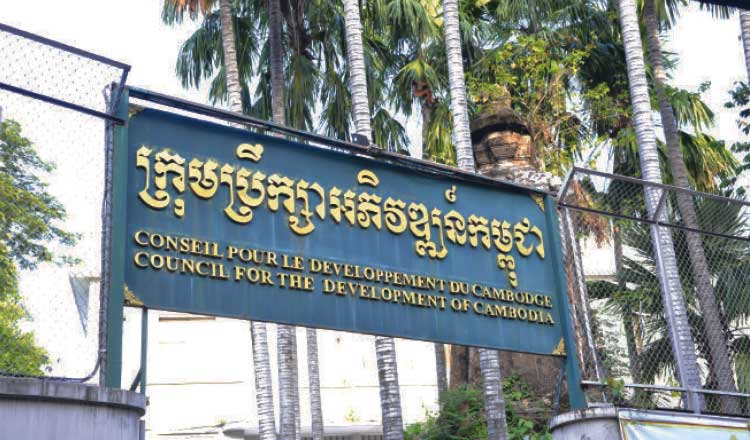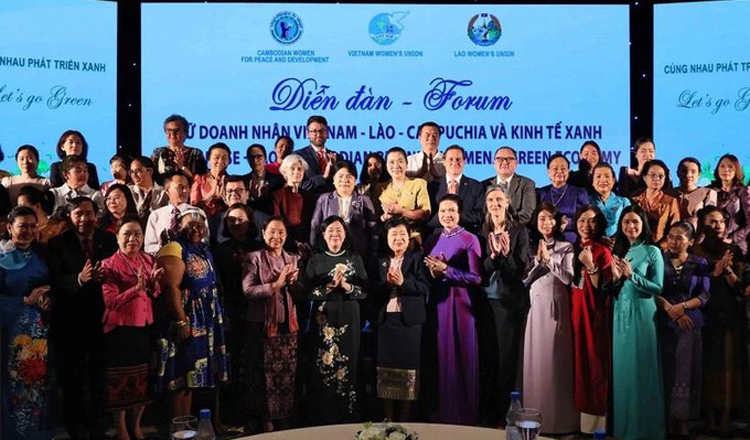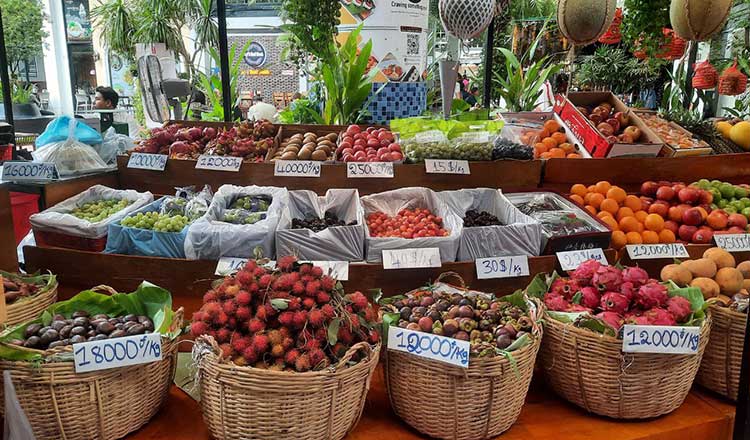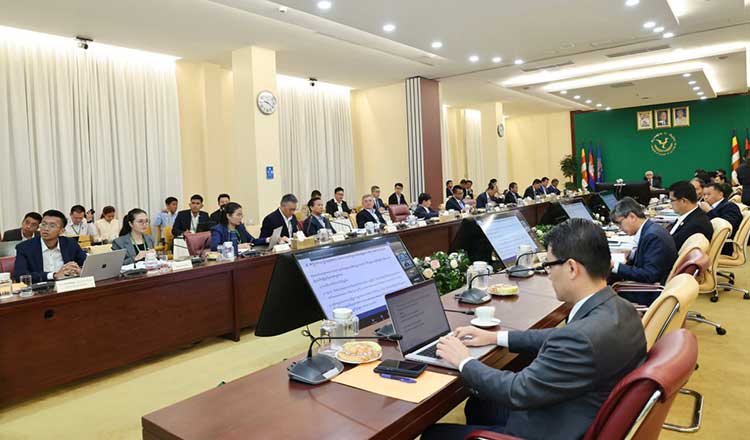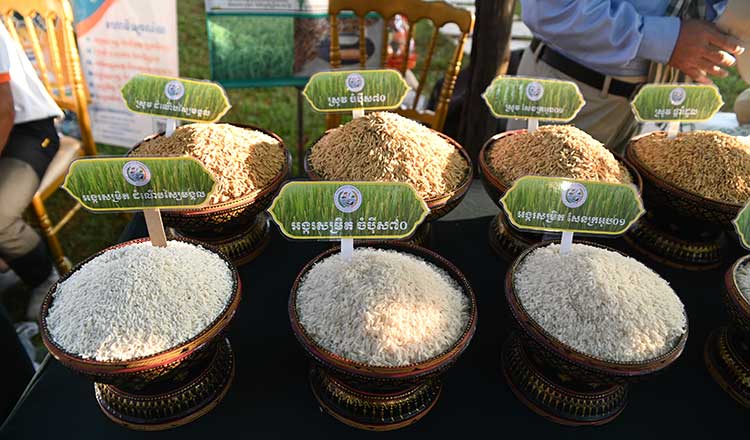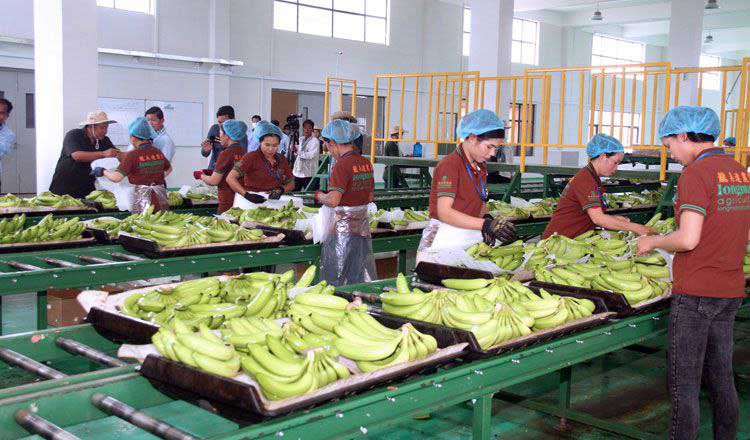GDP rebasing can help LDC graduation, investment flow
GDP rebasing can help LDC graduation, investment flow
The Royal Government’s recent initiative to recalibrate the Cambodian economy with 2014 as the base year is giving all stakeholders a more accurate estimate of the size and structure of the economy by incorporating new economic activities that were previously not captured in the computation. No doubt, it will enable all including policymakers and business leaders to make better decisions. Khmer Times spoke to experts to find out what the rebasing means especially at a time when the economic landscape of Cambodia is rapidly changing

The Cambodian government’s announcement last week regarding the rebasing of its GDP calculations taking 2014 as the base year instead of 2000 will provide a better idea of the current structure of the country’s economy and also, more crucially, help the Kingdom during its graduation from the Least Developed Country (LDC) status.
The National Institute of Statistics (NIS) under the Ministry of Planning announced the GDP rebasing at a workshop last Tuesday in the presence of Bin Troachhey, Minister of Planning, Phann Phalla, Secretary of State of the Ministry of Economy and Finance and representatives of relevant ministries, institutions and developing partners.
Cambodia does this now by aligning with the international standards set by the United Nations Statistics Division’s System of National Accounts (SNA). The NIS has come up with a model in collaboration with the International Monetary Fund, UNESCAP, the Asian Development Bank, and the World Bank.
Most governments overhaul the methods for GDP calculations every five years or at least every ten years to reflect changes in output and consumption. Cambodia used 2000 as the base year for GDP calculations till now. The changes to the structure of the economy since then have to be addressed.
The International Monetary Fund (IMF) in its World Economic Outlook for April 2024 already revealed Cambodia’s new GDP figures by taking 2014 as the base year, showing the economy 35 percent larger than previous GDP calculations indicated.
Accordingly, Cambodia’s GDP for 2023 is $41.9 billion, said Mekong Strategic Capital (MSC) in a note on the IMF’s decision. As per the Asian Development Bank’s (ADB’s) earlier figures, the Kingdom’s GDP for 2023 was $31.9 billion and the difference being reflected now is the result of the rebasing carried out by IMF in its latest calculations.
Chheng Kimlong, President of the Phnom Penh-based Asian Vision Institute (AVI), told Khmer Times that it is normal for countries to review their macroeconomic modelling and calculation methods, including changing the base year.
“In the Cambodian case, rebasing the year to 2014 reflects not only the current trends but also a higher relevancy of its macroeconomic dynamism that suits the current status of the Cambodian economy. The change of the base year from 2000 to 2014 signifies recalibration of the economic growth calculation in updated real terms, i.e., the inflation rates or Consumer Price Indices (CPI) that entail price levels responding to higher wage rates, economic growth foundations, etc.,” Kimlong noted.
In his view, while rebasing the GDP calculations to 2014 was of great necessity, the government needs to provide public explanations in simple terms, in addition to technical illustrations of the recalculations.
Very importantly, Kimlong also suggested that poverty rates based on the national poverty line should also be recalculated based on the updated statistics.
Meanwhile, according to MSC, this rebasing is the result of a well overdue but rigorous process by NIS to estimate the size of the Cambodian economy more accurately.
It said that one of the main drawbacks of the previous GDP figures was the overestimated contribution of agriculture to the economy over the years, even as the sector grew very slowly. They also underestimated the higher growth of the industry and services sectors by sticking to 2000 as the base year.
This revision is to measure the GDP size and structure more accurately, capturing the reality of Cambodia’s fast-changing economic landscape in line with the System of National Accounts 2008 and the International Standard Industrial Classification of All Economic Activities, ISIC 4.0, Bin Troachhey, Minister of Planning, said at the workshop.
Cambodia’s previous GDP calculations used 2000 as the base year. The methods used then to calculate GDP became outdated, failing to capture the full scope of the economic activity, he said. Accurate GDP data is also essential for effective policy planning by the government.
MSC, however, opined that the current rebasing should have taken a more recent base year instead of 2014. “These new estimates are only using 2014 as a base year, which would also be well out of date now. We believe that an up-to-date estimate given the ongoing transformation of the economy could see the economy being 45-50 percent bigger, rather than 35 percent (as shown by IMF),” it said.
GDP calculations are carried out using a range of statistical tools. Until now, the NIS had been using 2000 as the base year for these estimates, but the economy was entirely different 23 years ago.
“They (NIS) were applying a percentage growth estimate to a percentage growth estimate, for 23 years. As a result, the previous GDP estimates didn’t properly reflect the structural transformation in the economy, inflation impacts, and technological progress that we’ve seen since then,” the note said.
Reflects diversity
Anthony Galliano, CEO of Cambodian Investment Management Group, who closely watches the country’s economy, described the rebasing as a progressive measure that accurately reflects the diversity of the economy from a less agrarian concentration to a more developed economy with a growing mix of manufacturing, finance, and services industries.
In Anthony’s opinion, this should help Cambodia to attract more investments to the country. “The Kingdom can now offer a much larger scale economy for foreign investment and a domestic consumer base that is more affluent, with more disposable income, having an income per person of $2,345,” he noted.
According to Anthony, the challenge for Cambodia now is to take advantage of this opportunity of a more attractive size and scale of economy with a more affluent population. “For this, Cambodia needs to diversify its foreign investment base and accelerate the modernization and efficiency of the economy,” he said.
In his view, while China remains an overwhelming dominant investor in the Kingdom, the concentration of one large investor is an ongoing risk. “The investment from China is more than welcome, but the government should also make more efforts to generate a more diversified foreign investment base,” he said.
“The efforts of the government to generate a more diversified foreign investment base are commendable but these are also at the mercy of the incredible pace and impact of the technological development trajectory,” he added.
“Foreign Direct Investment (FDI) and Foreign Portfolio Investment (FPI) flows in ASEAN are targeting the financial and insurance industries, manufacturing, wholesale and retail trade, real estate and information and communication, in that order,” Anthony pointed out while calling for steps by Cambodia to attract some of these investments.
According to him, while finance and banking remained the largest recipient industry, manufacturing follows as a key target. Industries such as electric vehicles (EVs), electronics, biomedical and pharmaceuticals are particularly seeing increased investment.
With a crowded banking and insurance sector, dominated by the top three to five players, in combination with an underdeveloped capital and financial market system, FDI and FPI are largely flowing to Singapore, Indonesia, Thailand and Malaysia, rather than Cambodia, he said.
“In order to benefit from the largest inflow sector, the capital and financial markets in the Kingdom require rapid development acceleration. The challenges in the manufacturing sector are more related to electricity costs, infrastructure, lack of a highly skilled workforce, and investment and tax incentives,” Anthony further pointed out.
Impacts of rebasing
According to MSC, the impact of rebasing GDP is more around perception, but some of those perceptions really matter. For example, Cambodia’s high private debt to GDP ratio will fall from around 180 percent to a more comfortable 142 percent at the end of 2023 with the new calculations. It will also make Cambodia’s already very low public debt fall to even lower levels.
The GDP per capita will also be around 35 percent higher, which puts Cambodia around five years closer to achieving the upper middle-income status. This will impact how investors and others perceive Cambodia – a bigger economy is generally more attractive to invest in than a smaller one, all other things being equal.
But this can also impact Cambodia’s taxation levels. The General Department of Taxation (GDT) has been lauded for increasing Cambodia’s tax base as a percentage of GDP. But the taxation levels also could appear 35 percent smaller which could give ground for further taxation.
The rebasing, meanwhile, is expected to help Cambodia in its LDC graduation efforts as well, as per capita income is a major criterion for the evaluation process by the Committee for Development Policy (CDP) of the United Nations.
Ky Sereyvath, Senior Economist and Director General of the Institute of China Studies, told Khmer Times that the rebasing reflects income change not just for the economy but at the individual level (per capita income) as well.
“It shows clearly that Cambodia’s income is high enough to graduate from LDC and reach the upper middle income country status by 2030,” Sereyvath noted.
Expectations are that Cambodia will achieve the Upper Middle Income Country status by 2030 or even earlier and a High-Income Country status by 2050. The UN General Assembly is expected to take a call on Cambodia’s LDC graduation this November.
Countries are revising and rebasing their GDP calculations all the time. It doesn’t normally result in as large a revision as seen in Cambodia, although sometimes it is much larger.
Stephen Higgins, the Managing Partner of Mekong Strategic Capital, told Khmer Times recently that the recommended best practice is to do the rebasing at least every five years.
Just under 10 years ago, there were some very large revisions amongst African countries, with Nigeria increasing 89 percent, Ghana up 62 percent, Tanzania up 25 percent, and Kenya up 24 percent. Given the base year for Cambodia had been 23 years old, it’s not surprising that we’re seeing a big change here, the note said.
According to the United Nations Development Programme (UNDP), GDP rebasing is beneficial to a country in many ways. Such benefits include enabling policymakers and analysts to obtain a more accurate set of economic statistics that are a truer reflection of current realities for evidence-based decision-making.
Secondly, it reveals a more accurate estimate of the size and structure of the economy by incorporating new economic activities that were previously not captured in the computational framework.
Thirdly, it provides better tools for governments to tackle the challenges of growing the economy and fighting poverty. It further enables governments to have a better understanding of the structure of the economy, the sectoral growth drivers and sectors where investment and resources should be channelled in order to grow the economy, create jobs, improve infrastructure and reduce poverty.
The frequency with which countries change their base periods varies from one country to another. For example, some countries rebase every 10 years, while others carry out the exercise every five years.
Others do it in less than five-year intervals. This depends on developments within the economy that authorities would want to capture via rebasing. Changes, in consumption and production patterns, and changes in technologies of production, have also been seen as a panacea for a country to rebase its GDP series.







